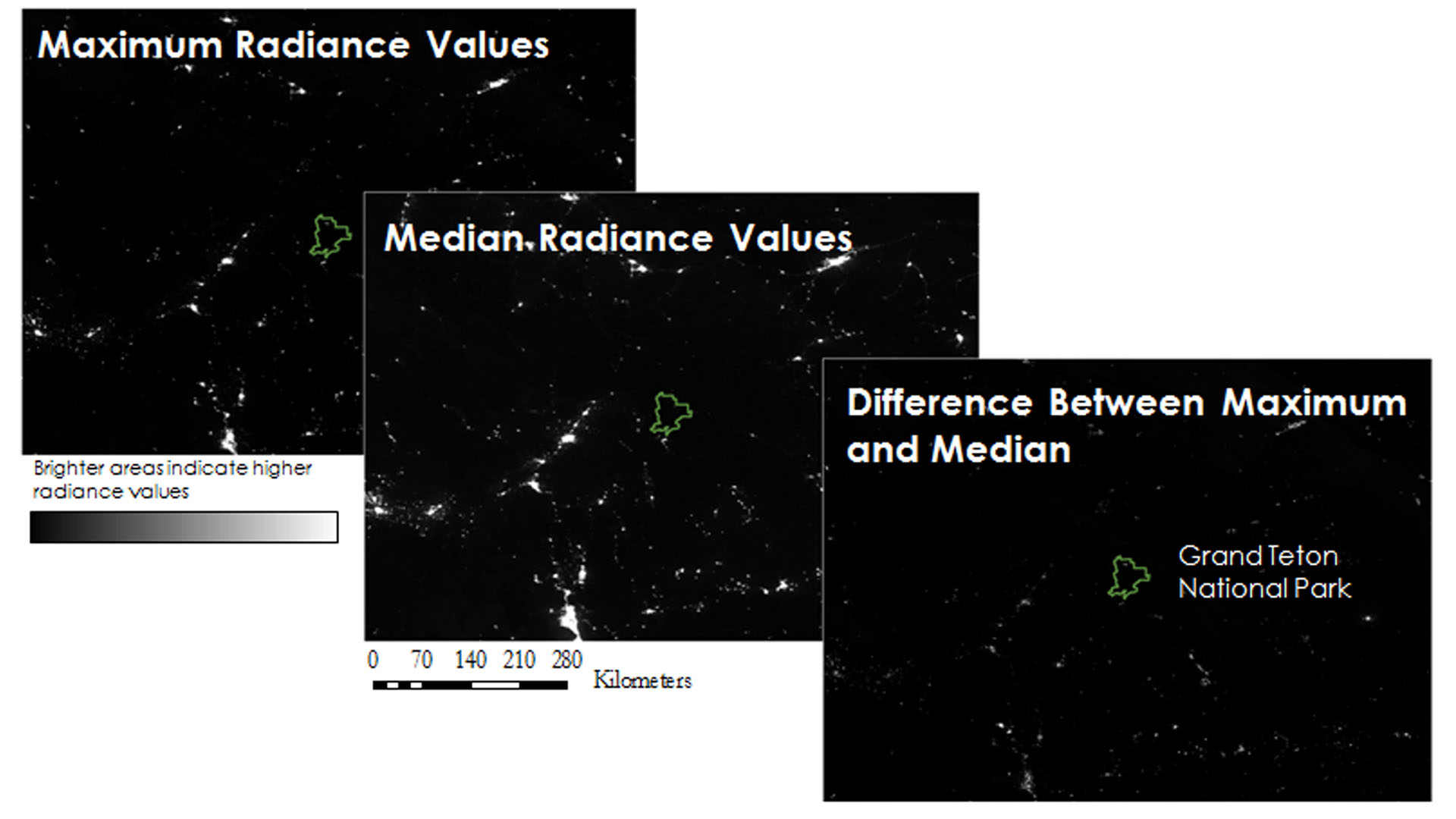Wyoming Cross-Cutting

Utilizing NASA Earth Observations to Detect Changes in Nighttime Sky Brightness in Grand Teton National Park
Light pollution causes measurable damage to natural wildlife behaviors and human health, as well as decreases the ability for humans to view the night sky. The artificial brightening of the night sky, or sky glow, created by light pollution subjects nearly 100% of Americans to light-polluted skies with only three percent able to see the Milky Way from their homes. Historically, Grand Teton National Park has been a refuge for those seeking dark night skies; however, the quality of these skies is threatened by the spread of light pollution from nearby towns. The NASA DEVELOP Wyoming Cross-Cutting team partnered with Grand Teton National Park, the International Dark-Sky Association, and Wyoming Stargazing to utilize NASA Earth observations to identify sources of light pollution within the park, and the surrounding states up to a 300 km buffer. Utilizing Suomi NPP VIIRS Day/Night Band data and equations derived from Falchi et al.'s (2016) model of light emission, the team developed a convolution matrix to be used in the summer term to calculate sky glow levels and estimate light pollution within the park. The products will allow partners to assess areas where changes in lighting practices were effective, and suggest where mitigation is needed to reduce light pollution.
Project Video:
Illuminating a Lost Treasure: Remote Monitoring of Night Sky Light Pollution
- Location
- Wise County Clerk of Circuit Court's Office
- Term
- Spring 2017
- Partner(s)
- National Park Service, Intermountain Region
National Park Service, Grand Teton National Park
International Dark-Sky Association - NASA Earth Observations
- Suomi NPP, VIIRS
Terra, MODIS - Team
- Benjamin Marcovitz (Project Co-Lead)
Veronica Warda (Project Co-Lead)
Aubrey Hilte
Christine Stevens
Eric White - Advisor(s)
- Dr. Dewayne Cecil (NOAA National Center for Environmental Information, Global Science and Technologies)
Dr. Kenton Ross (NASA Langley Research Center)
Bob VanGundy (The University of Virginia's College at Wise)